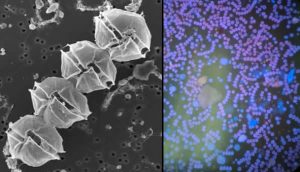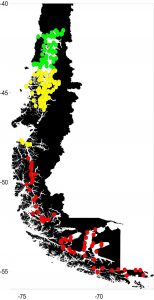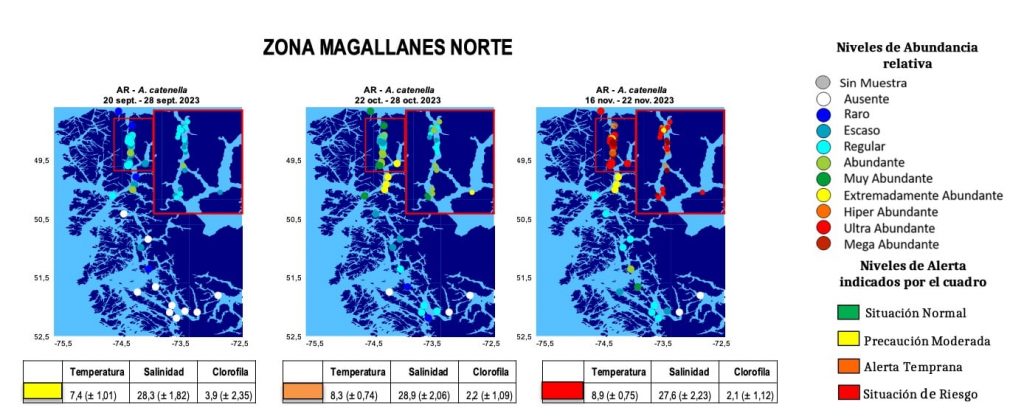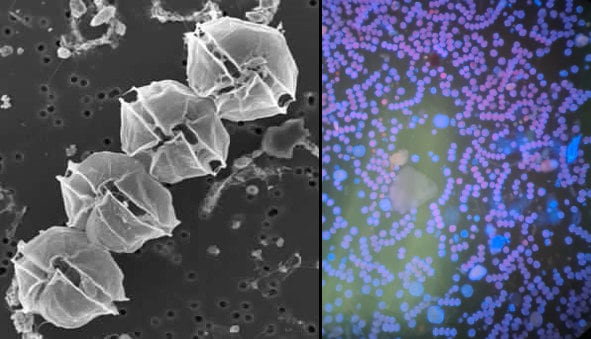Intense flowering of Alexandrium catenella in Última Esperanza extreme north of Magallanes and Chilean Antarctica region province.
December 13th, 2023
Alexandrium catenella 4 cells chain (scanning electron microscope) (left hand) Photomicrograph flowering at this moment (courtesy of César Alarcón)

The colored dots show sampling sites location, green in Los Lagos, yellow in Aysén and red in Magallanes. The sector that is currently being affected by Alexandrium catenella flowering is highlighted with an oval with white outlines.
Dr. Leonardo Guzmán Méndez, red tide monitoring program head in national fjords (between Reloncaví estuary in Los Lagos region to Mariotti islets, in Magallanes region and Chilean Antarctica extreme south) , has reported that in Última Esperanza province, particularly between Adalberto Channel and Topar Island, an intense flowering of Alexandrium catenella is occurring, a microalgae that is linked to the paralyzing toxin in shellfish. The last sampling carried out between November 16th and 22nd shows a wide geographical coverage with very high levels of this microalgae, which gradually began to manifest from September and it is expected that this condition could last until January or February 2024. The presence of toxic shellfish, given that the dynamics of elimination of the paralyzing toxin from the shellfish tissues is slow, they could present paralyzing toxin, if these conditions continue, at least until the fall of 2024.
If the 39 sampling sites established in Ultima Esperanza are considered, average values of relative abundance (± standard error) were 1.8 (±0.21); 3.3 (±0.26) and 6.0 (±0.42) for the months of September, October and November, respectively, while if only the sites where flowering is occurring (30 sites) are considered, these They present values of 2.5 (±0.15); 4.0 (±0.23) and 7.5 (±0.24) for the same months. It is considered that during December the estimates of relative abundance should be maintained or slightly declined, and a field campaign is planned for the next few days to follow the evolution of flowering (see photograph).
From the environmental point of view, water temperature (°C), salinity (psu) and chlorophyll-a (mg m-3) average values (± standard error) , are normal for this period of the year, with temperatures averages of 8.9 (± 0.75) °C, similar to the values recorded in same period of previous year (8.5) °C, normal salinity (27.6 psu), and low values of chlorophyll-a of 2.1 mg m-3.

Maps showing, following a color palette, the values of the relative abundance estimators of Alexandrium catenella in Última Esperanza province in Magallanes and Chilean Antarctica region extreme north. Color palette of alert levels is included.
Press related links:
aqua.cl
